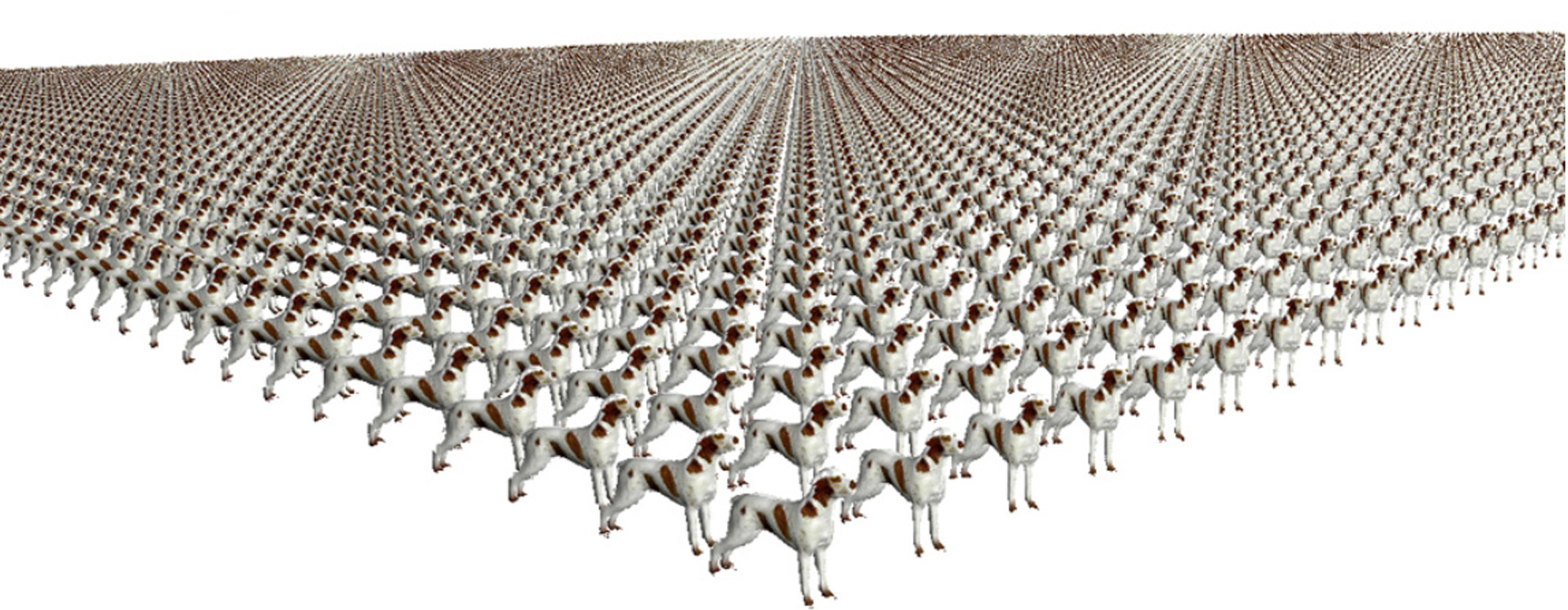“True imposters” by Risser
Conference:
Type(s):
Title:
- True imposters
Presenter(s)/Author(s):
Abstract:
Imposters are a powerful technique which has been widely used for many years in the graphics community. An imposter is a two dimensional image rendered onto a billboard which represents highly detailed geometry. Imposters can be created on the fly or pre-computed and stored in memory, in both cases the imposter is only accurate for a specific viewing direction, as the view deviates from this ideal condition, the imposter loses accuracy. The same imposter is reused until its visual error surpasses a given arbitrary threshold in which case it is replaced with a more accurate imposter.True Imposters takes advantage of the latest graphics hardware to achieve accurate geometric representation updated every frame for any arbitrary viewing angle. It builds off of Relief Mapping of Non-Height Field Surfaces [Policarpo 2006] and continues past the goals of traditional per-pixel displacement mapping techniques which are to add visually accurate sub-surface features to any arbitrary surface by generating whole 3D objects on a billboard. True Imposters distinguishes itself from previous per-pixel displacement mapped imposter methods by offering no viewing restrictions, animation and performance optimizations.A single texture can hold four height-fields which can represent many volumes. More texture data can be added to extend this to any shape. Normally these height-fields would represent the surface of a shape, and the viewing vector would be transformed into the polygons local coordinate frame with respect to its normal. However, in our case we chose instead to transform our surface geometry with respect to our view direction vector, or in other words, generate a billboard which we can then use as a window to view our height fields from any given direction.The first image shows a representation of our billboard’s texture coordinates after they have been transformed into a 3D plane and rotated around our functions in the center (represented by the fish).The second image shows the perspective of our function which would be displayed on our billboard.Once the texture plane is rasterized, each fragment can be considered the origin of a ray, since its direction is simply the view direction; the problem now can be solved with a linear march followed by binary search.True Imposters also offer a simple yet effective animation scheme in which the animation frames are tiled on a single texture, offering quick look-ups using the pixel shader.
References:
1. Fabio Policarpo, Manuel M. Oliveira. Relief Mapping of Non-Height-Field Surface Details. ACM SICGRAPH 2006 Symposium on Interactive 30 Graphics and Games, Redwood City, CA, March 14-1 7, 2006, pp. 55–62.
2. Fabio Policarpo, Manuel M. Oliveira, Joio Comba. Real-Time Relief Mapping on Arbitrary Polygonal Surfaces. ACM SICGRAPH 2003 Symposium on Intemctive 30 Graphics and Games, Washington, DC, April 3-6, 2005, pp. 155–162.





